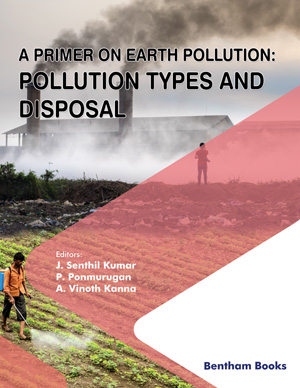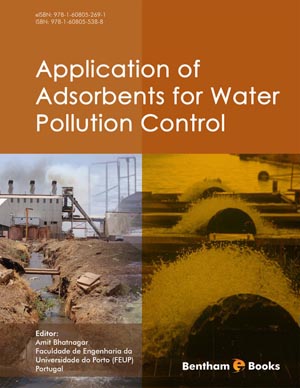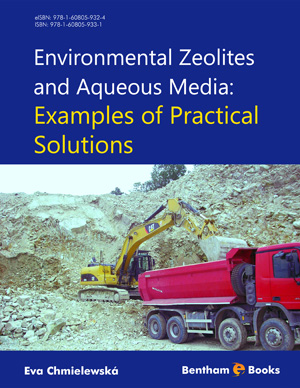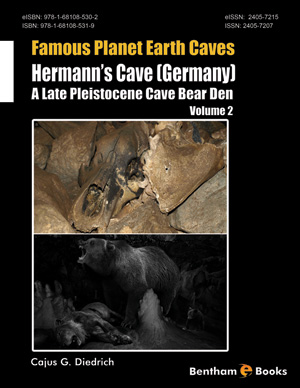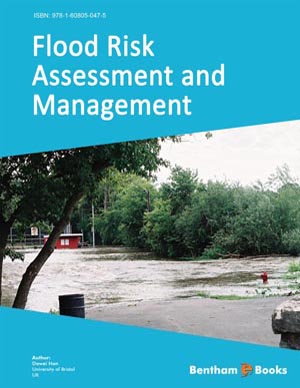Preface
Page: iii-iii (1)
Author: Urmila Diwekar and Heriberto Cabezas
DOI: 10.2174/978160805103811201010iii
List of Contributors
Page: iv-viii (5)
Author: Urmila Diwekar and Heriberto Cabezas
DOI: 10.2174/9781608051038112010100iv
Principles of Sustainability From Ecology
Page: 9-39 (31)
Author: Audrey L. Mayer
DOI: 10.2174/978160805103811201010009
PDF Price: $30
Abstract
Most sustainability principles can be broadly described under four themes: resilience, desirability, intergenerational (temporal) equity, and intragenerational (spatial) equity. While the field of ecology does contribute much of what we generally know about the environmental dimension of sustainability, many subfields, hypotheses, and theoretical frameworks have influenced sustainability science, policy and assessment. In particular, ecology has emphasized: the critical need for understanding how dynamic complex systems evolve resilience to, and are governed by, disturbances; the spatial and temporal scales at which we discuss and seek to achieve sustainability, and the effect of systematic connectivity at multiple scales on our ability to reach sustainability goals. The importance of diverse, functioning ecosystems to many vital processes, including nutrient cycling, water purification, flood regulation, biomass production, and many others, influences the goods and services that societies require; these are the resources that will most likely be needed for many future generations.
The Economics of Sustainability
Page: 40-64 (25)
Author: Joshua C. Farley
DOI: 10.2174/978160805103811201010040
PDF Price: $30
Abstract
Human society currently faces a number of unprecedented challenges, ranging from global climate change and biodiversity loss to peak oil and natural resource depletion. Unfortunately, competitive market economies systematically favor the conversion of ecosystem structure into economic products over its conservation in order to provide vital ecosystem services. In order to design a sustainable economic system, we must assess the desirable ends of economic activity as well as the scarce resources required to attain them. The most critical desired ends require cooperation, not competitive markets. Fortunately, humans have evolved as cooperative, social animals, and proper economic institutions can elicit cooperative behavior in order to attain these ends. Building a sustainable economy requires a scientific approach in which institutions for allocation are determined by the ends we hope to attain and the physical characteristics of the resources at our disposal, not by ideological commitments to a market economy.
Actualizing Sustainability: Environmental Policy for Resilience in Ecological Systems
Page: 65-87 (23)
Author: Ahjond S. Garmestani, Matthew E. Hopton and Matthew T. Heberling
DOI: 10.2174/978160805103811201010065
PDF Price: $30
Abstract
The loss of biodiversity has the capacity to decrease the resilience of ecological systems, which can result in the loss of ecosystem services essential for human survival. Thus, the protection of biodiversity is a critical component to actualizing sustainability. In this paper, we suggest several possible policy instruments for dealing with the apparent intractability of economics, ecology, and the law. In order to actualize sustainability for future generations, we must develop new, or adapt established, policy to protect biological diversity and ecosystem services.
Human Interactions and Sustainability
Page: 88-111 (24)
Author: Michael E. Gorman, Lekelia D. Jenkins and Raina K. Plowright
DOI: 10.2174/978160805103811201010088
PDF Price: $30
Abstract
This chapter describes a framework for understanding and managing complex systems that couple human beings, nature and technology. The framework includes five major components; the first three are necessary capabilities for accomplishing the last two.
• Superordinate goals: Human beings have to see the urgent necessity of working together to solve problems like climate change and depletion of natural resources.
• Moral imagination: Differences in values can prevent adoption of a superordinate goal. Moral imagination is the equivalent of interactional expertise concerning values; it involves being able to ‘step into the shoes’ of another stakeholder and see the problem from her or his perspective.
• Trading zones: Linking multiple stakeholders will require setting up a series of trading zones for exchanging ideas, resources, and solutions across different communities and interests.
Developing the three capabilities above will permit:
• Adaptive management: This strategy involves treating management interventions like hypotheses, subjecting them to empirical tests, and revising the strategy based on the results. Adaptive management is difficult in tightly coupled humantechnological- natural systems, where hypotheses should be constructed not only about environmental impacts, but also about effects on stakeholders.
• Anticipatory governance: Global problems and opportunities will require adding more anticipatory, adaptive capability to governance mechanisms, linking decision makers with other stakeholders. These exchanges will have to be motivated by a superordinate goal so urgent that governance structures can be transformed, if necessary.
This framework will be applied to two detailed case studies, one concerned with developing better management practices for reducing bycatch in fisheries, the other with ecosystem disruptions like the 2001 outbreak of foot and mouth disease in the UK. Limitations of the framework will be discussed in the light of these case studies, along with suggestions for how it can be improved.
On the Matter of Sustainable Water Resources Management
Page: 112-140 (29)
Author: W.D. Shuster
DOI: 10.2174/978160805103811201010112
PDF Price: $30
Abstract
This chapter attempts to develop the concept of sustainability and make it operational in the realm of water resources management. Water is unique in its primacy among natural resources as an essential component of life itself. Due to its equally unique chemical and physical properties, water carries with it a history of where it has been and its courses in the hydrologic cycle are readily measured or observed. However, the transience of some fluxes of water in the hydrologic cycle is more difficult to predict or manage. From a management perspective, this is problematic as it is often impossible to accumulate all of the necessary freshwater resources in one place by rainfall and runoff alone. Therefore we must manage other parts of the water cycle to account for anthropogenic objectives, and this would include mining groundwater, controlling evaporation in irrigated systems among a host of other tradeoffs that currently depend in great part upon economic factors. We will explore through case studies in Germany and Cincinnati OH how social-equity and environmental objectives must also be considered with the same weight as economic factors. The influence of an expanded and more integrated view of the hydrologic cycle is illustrated through examples and case studies, and provides an introduction to and ideas for the notion that water resources can be more sustainably managed through the recognition of exchangeable social, cultural, natural resource, and technological capitals.
Sustainable Infrastructure and Alternatives for Urban Growth
Page: 141-172 (32)
Author: Arka Pandit, Hyunju Jeong, John C. Crittenden, Steven P. French, Ming Xu and Ke Li
DOI: 10.2174/978160805103811201010141
PDF Price: $30
Abstract
With the global urban population becoming 7.0 billion by 2050, there will be a huge demand of the provision of basic infrastructure to this population. With the growing concerns over climate change and energy /resource scarcity, there is a need of paradigm shift from the ‘Romanesque’ idea of infrastructure provision to a sustainable and resilient urban infrastructure which should be designed, constructed and operated within the means of nature. The goal of a sustainable and resilient urban infrastructure is not only to provide the infrastructure amenities but also to develop the socioeconomic attributes of the urban system. In order to attain this goal, the interconnection between the individual infrastructure components and their inter-relation with the socioeconomic attributes needs to be understood. Based on this understanding, many Low Impact Development alternatives for urban infrastructure, including but not limited to stormwater management, can be assessed designed and applied to attain this goal.
Engineering Urban Sustainability
Page: 173-196 (24)
Author: Ke Li, John Crittenden, Subhrajit Guhathakurta and Harindra Joseph Fernando
DOI: 10.2174/978160805103811201010173
PDF Price: $30
Abstract
Population growth and increased concentration of economic activities in urban areas pose significant challenges for sustainable development of urban regions. Our ability to make correct choices about future development will depend upon our understanding of the impact of these choices on the future quality of life of the urban inhabitants. Land use, construction material use and construction practices are among the most critical drivers of sustainability, given that where and how we choose to build will affect a range of environmental attributes including energy use, water use, air quality, waste handling, and public health, among others. The challenge is the quantification and visualization of the interdependent future consequences in the regional/urban landscape by independent decisions at the urban area. This requires a meta-model framework that integrates the outcomes resulting from growth and spatial distribution of economic and social activities. A framework that integrates land use, construction practices, transportation and air quality were given as an example.
Sustainability Indicators and Metrics
Page: 197-221 (25)
Author: H. Cabezas
DOI: 10.2174/978160805103811201010197
PDF Price: $30
Abstract
Sustainability is about preserving human existence. Indicators and metrics are absolutely necessary to provide at least a semi-quantitative assessment of progress towards or away from sustainability. Otherwise, it becomes impossible to objectively assess whether progress is being made. The subject, however, is by its nature complex and multidisciplinary. Indicators and metrics must, therefore, encompass a wide of issues relevant to human existence, and they must be useful in “steering” the system towards a sustainable trajectory. They must, however, be well grounded in science and allow for comparisons across different systems. As a minimum, metrics must represent economic strength, human environmental burden, energy use, and system order and stability. A comprehensive suite of metrics is essential to the kind of adaptive management that is necessary for practical implementation of sustainability.
Implications of Thermodynamics for Sustainability
Page: 222-242 (21)
Author: Bhavik R. Bakshi and Geoffrey F. Grubb
DOI: 10.2174/978160805103811201010222
PDF Price: $30
Abstract
This chapter describes and demonstrates the role that thermodynamics can play in assessing the sustainability of technological activities and in improving their design. Since thermodynamics governs the behavior of all systems, it can play a crucial role in understanding fundamental physical limits of technologies and for quantifying the contribution of resources. The concept of exergy captures the first and second laws of thermodynamics. Since exergy is the common currency that flows and gets transformed in industrial and ecological systems, it allows the joint analysis of industrial and ecological systems. This insight permits accounting of the role of ecosystem goods and services in supporting human activities. Since ecosystems are critical to sustainability, accounting for their role must be a part of all methods aimed toward the analysis and design of sustainable systems. Thermodynamics provides a scientifically rigorous approach for meeting this challenge. In addition, exergy analysis of industrial processes and life cycles helps in identifying areas of maximum resource inefficiency and opportunities for improvement. This approach complements the insight obtained from assessing the impact of emissions. Case studies based on the life cycle of biofuels and nanomanufacturing are used to demonstrate the important role that thermodynamics can play in sustainability engineering.
Industrial Ecology and Sustainable Development: Dynamics, Future Uncertainty and Distributed Decision Making
Page: 243-272 (30)
Author: Jim Petrie, Ruud Kempener and Jessica Beck
DOI: 10.2174/978160805103811201010243
PDF Price: $30
Abstract
This chapter describes ways to enhance the operational potential of Industrial Ecology. Attention is paid to specific challenges for sustainable development beyond the broad aims of achieving economic competitiveness, ensuring environmental stewardship, and promoting both intra- and inter-generational equity. The focus is on the distributed decision making practices of individual agents within networks of industry, business and government, which, in various combinations, provide the underlying structure of any industrial ecology. Here, we consider the need for design and analysis tools to engage with the dynamics and uncertainty which characterize complex hierarchical socio-technical systems, including the ability to observe and interrogate system behaviour over multiple spatial and temporal scales, and to embrace the vitality which comes from human judgment in decision making within these systems. This capability should support the transition of such networks to ones which are both resilient and adaptive whilst pursuing.sustainability goals. We explore the role of both simulation and optimization toolkits in this regard, and conclude that there is value in a dual approach. Agent-based models of industrial ecosystems can be coupled with scenario analysis techniques to engage with future uncertainties. The way in which individual agents internalize such “world view” scenarios in their own distributed decision making practices, is highlighted. The effectiveness of agent interventions to support successful transitions to more sustainable practices can be measured against goal programming objectives, which in turn are defined by exploring the dynamic multiple objective optimisation decision space.
Green Engineering and Sustainability: A Systems Analysis Perspective
Page: 273-309 (37)
Author: Urmila Diwekar
DOI: 10.2174/978160805103811201010273
PDF Price: $30
Abstract
This chapter presents a systems analysis perspective that extends the traditional plant design framework to green engineering, green energy and industrial ecology leading to sustainability. For green engineering this involves starting the design decisions as early as chemical and material selection stage on one end, and managing and planning decisions at the other end. However, uncertainties and multiple and conflicting objectives are inherent in such a design process. Green engineering principles are illustrated here using a green energy sector case study. Uncertainties increase further in industrial ecology. The concept of overall sustainability goes beyond industrial ecology and brings in time dependent nature of the ecosystem and multi-disciplinary decision making. Optimal control methods and theories from financial literature can be useful in handling the time dependent uncertainties in this problem. Decision making at various stages starting from green plant design, green energy, to industrial ecology, and sustainability is illustrated for the mercury cycling. Power plant sector is a major source of mercury pollution. In order to circumvent the persistent, bioaccumulative effect of mercury, one has to take decisions at various levels of the cycle starting with greener power systems, industrial symbiosis through trading, and controlling the toxic methyl mercury formation in water bodies and accumulation in aquatic biota.
The Case and Practice for Sustainability in Business
Page: 310-339 (30)
Author: Beth Beloff and Arnaud Chevallier
DOI: 10.2174/978160805103811201010310
PDF Price: $30
Abstract
Over the past fifty years, the concept of corporate sustainability has been evolving. To date, there is not a single commonly accepted definition for it, although managing the triple bottom line—economic, environmental and social aspects—is gaining traction. Companies see different types of value in embracing sustainability, from reducing costs to enhancing their brand reputation and fostering product innovation. This chapter describes the multiple meanings of corporate sustainability, introduces the drivers of sustainability, explains how key historical events have shaped it and reviews the typical path that companies have taken to incorporate sustainability into their business agenda. It also provides a description of the value proposition that motivates companies to embrace it and challenges in achieving that value.
Summary
Page: 340-346 (7)
Author: Urmila Diwekar
DOI: 10.2174/978160805103811201010340
PDF Price: $30
Introduction
The concept of sustainability is inherently multi-disciplinary because it concerns a complex system having economic, technological, ecological, political, and other perspectives. Consequently, any effort in the area of sustainability involves concepts, principles, and methods from engineering, the social sciences including economics and social psychology, the biological sciences including ecology, and the physical sciences. Sustainability: Multi-Disciplinary Perspectives discusses multidisciplinary aspects of the salient concepts, principles, and methods relevant to sustainability in a coherent and comprehensive manner. Topics covered range from green engineering and sustainability metrics to infrastructure and environmental policy.



